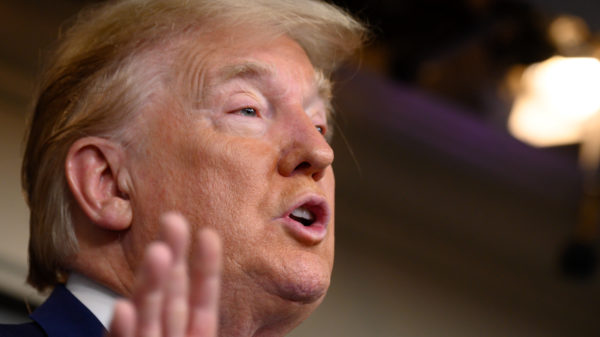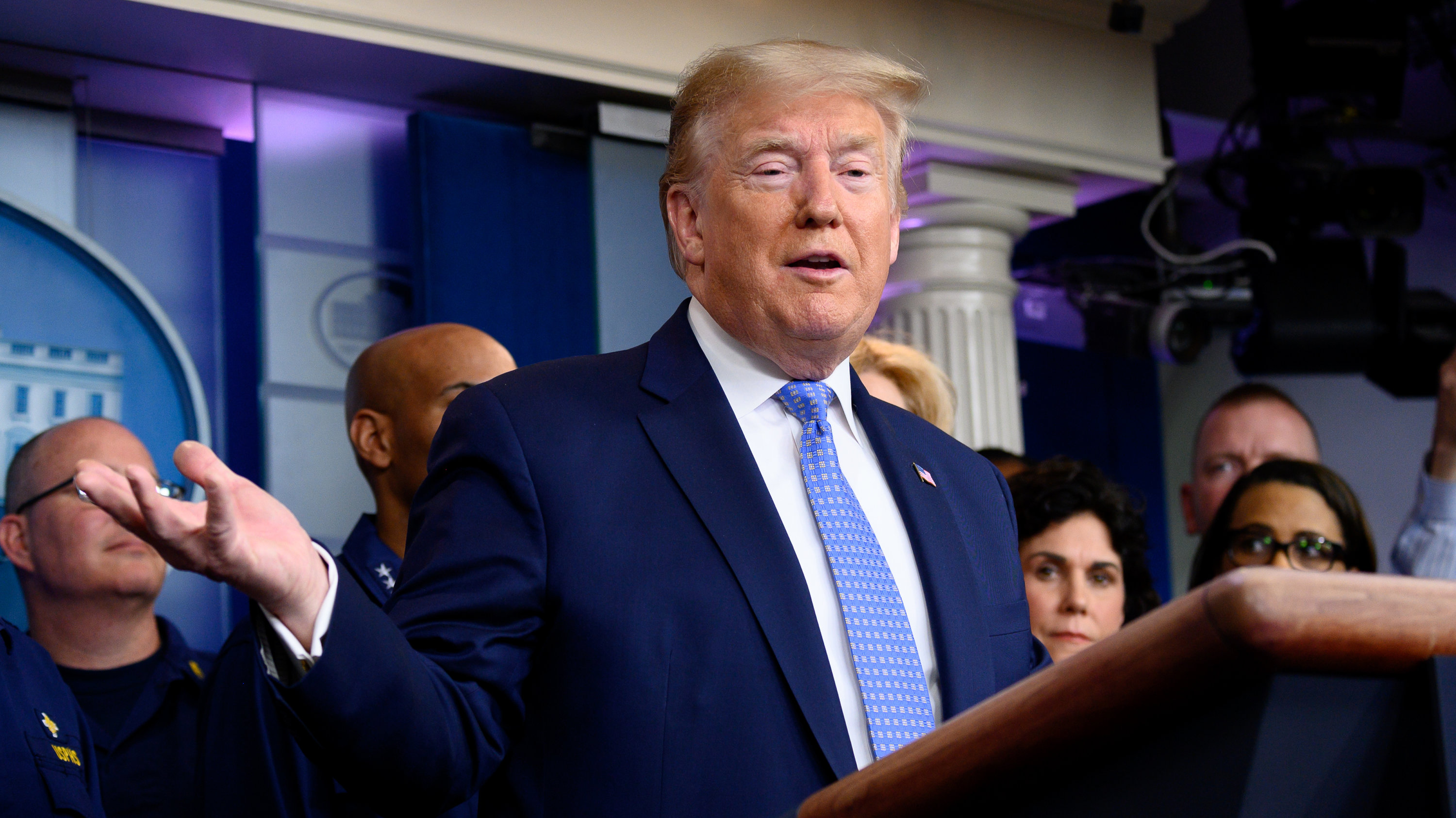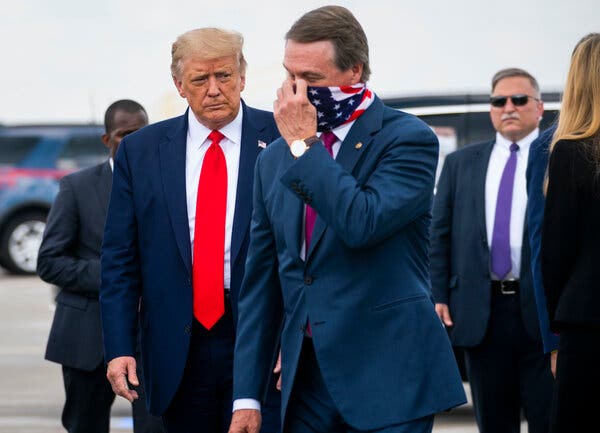Advertisement
On a conference call with the nation’s governors, President Trump said they should try to get ventilators on their own ahead of an expected crush of coronavirus cases.
transcript
0:00/0:19
-0:19
transcript
In a recording shared with The New York Times, President Trump suggested to governors that they should not wait for the federal government to supply hospitals with equipment for coronavirus treatments.
-
Trump: But we are backing you in terms of equipment, and getting what you need. Also, though, respirators, ventilators all of the equipment, try getting it yourselves. We will be backing you. But try getting it yourselves — point of sale — much better, much more direct if you can get it yourself.

WASHINGTON — President Trump told a group of governors on Monday morning that they should not wait for the federal government to fill the growing demand for respirators needed to treat people with coronavirus.
“Respirators, ventilators, all of the equipment — try getting it yourselves,” Mr. Trump told the governors during the conference call, a recording of which was shared with The New York Times. “We will be backing you, but try getting it yourselves. Point of sales, much better, much more direct if you can get it yourself.”
The suggestion surprised some of the governors, who have been scrambling to contain the outbreak and are increasingly looking to the federal government for help with equipment, personnel and financial aid. Last Wednesday, Mr. Trump directed his labor secretary to increase the availability of respirators, and he has generally played down fears of shortages.
Governors Jay Inslee of Washington, whose state is at the epicenter of the domestic outbreak, and Michelle Lujan Grisham of New Mexico both reacted angrily to the administration’s slow response to the crisis.

“If one state doesn’t get the resources and materials they need, the entire nation continues to be at risk,” said Ms. Lujan Grisham, a Democrat.
But Gov. Ron DeSantis of Florida, a Republican ally of the president’s, told reporters Monday afternoon that Mr. Trump was attempting to tell the governors that if they can get the ventilators themselves they can “cut out the federal bureaucracy and potentially get it quicker.”
“What he was saying,” Mr. DeSantis continued, “was sensible.”
Mr. Trump used much of the call to repeat the same upbeat theme he has offered in public, assuring the governors: “We’re going to get it remedied and hopefully very quickly.”
Alluding to the Federal Reserve’s emergency intervention, Mr. Trump also told the governors that the central bank’s purchase of $500 billion of Treasury bonds and $200 billion of mortgage-backed securities would “probably go up substantially from that level.”
Without directly trying to fault President Barack Obama as he has recently, Mr. Trump wrongfully said, “we broke down a system that was broken, very badly broken” and vowed to create one “that I think is going to be the talk of the world.”
In fact, although the Food and Drug Administration under the Obama administration released guidance on testing, it never completed regulations on the matter, and experts have said repeatedly that no moves by the agency should have affected the testing problems.
Aside from Mr. Trump’s predictions — which are at odds with his medical advisers, who say the worst is yet to come — the president seemed to evince little awareness of the severity of the contagion.
Explaining why he did not include the United Kingdom in his initial travel ban from Europe last week, Mr. Trump said, “all of the sudden we were getting numbers that weren’t good, so we had to put U.K. in.”
Britain had nearly 500 coronavirus cases last week.
Ms. Lujan Grisham said the federal government was impeding the states’ ability to respond to the virus and was creating a situation where the states were competing against one another for the needed products.
And, she said, the governors are getting little clarity from the White House.
The governor requested a call back from Vice President Mike Pence, the point person on the administration’s response. And in an illustration that at least Mr. Pence, himself a former Indiana governor, is taking the complaints of the state leaders seriously, he telephoned Ms. Lujan Grisham immediately after the call ended, according to an aide to Ms. Lujan Grisham.
Patricia Mazzei contributed reporting from Miami.



